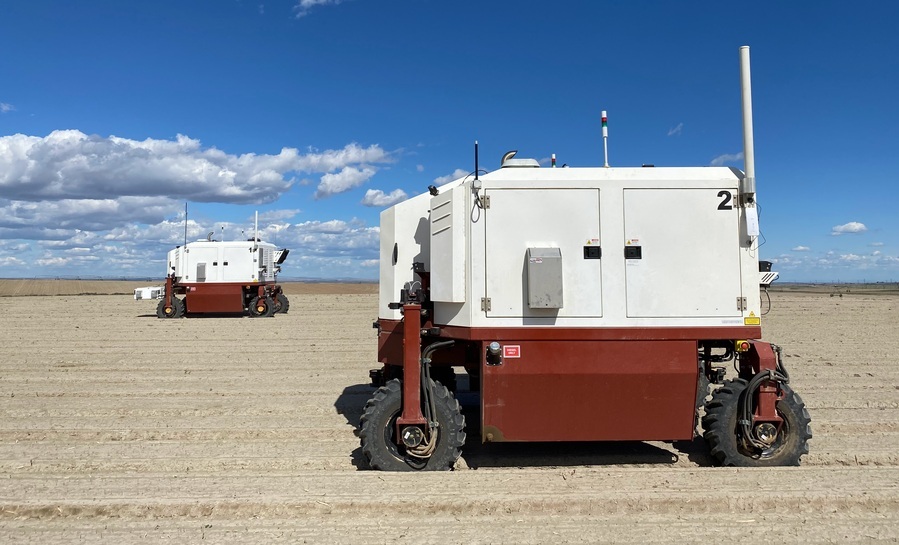- April 24, 2024
-
-
Loading

Loading
It is likely that weed killer and pesticide runoff from all of us who live near the water, and from farms, contribute significantly to fueling both red tide and blue-green algae outbreaks in Florida. Both cause massive sea life die-offs and foul our beaches and coastal waters, with grave impact on the environment and our beach-tourism-based economy. Keeping our water and beaches clean is vital for a better environment and our quality of life.
Technological innovations in agriculture promise to make big inroads in reducing agricultural runoff into rivers, streams and coastal waters and may soon expand to lawn care and landscaping to reduce harmful runoff from urban and suburban areas. In the last few decades new farming technologies like surveillance drones, autonomous tractors and high-tech greenhouses improved farming efficiency. Those technologies have already spilled over to urban and suburban uses, especially drones and robomowers. New advancements in weed control techniques could be the next big agricultural tech breakthrough to transform modern farming.
For example, a company called Carbon Robotics is one of several companies that make automated farming equipment and now what they call the “Autonomous Laserweeder,'' an automated weeding machine using laser beams to zap a field’s weeds — no chemicals required.

Automated, laser-guided methods of weed-control for agriculture could mean that farmers will no longer have to use dangerous herbicides or less effective natural weed control options. Because natural herbicides cannot kill the roots of weeds as effectively as more chemically modified compounds, many natural pesticides require farmers to spray their crops multiple times a season, whereas traditional chemical methods only need one application, but are loaded with chemicals that poison our waters.
Roboweeders can fully weed anywhere from 15-20 acres a day, while weeding by hand the average farm team could barely cover that same ground in a week. And the roboweeder can work day and night, in bad weather, and kills only the weeds and not beneficial plants. It also does not harm the soil like herbicides do so the need for soil additives is reduced. Adding up the savings from not buying herbicides and soil additives and the higher productivity of the roboweeder the economics of lasers over spraying start to makes sense.
This technology, like the others mentioned, starts with farms and their economies of scale. Laserweeding works by using high-resolution cameras to differentiate weeds from crops and avoid harming the health of the soil. The learning and improvements from agricultural uses will make it easier to build databases to allow that system to recognize yard, garden and decorative plants from weeds. As the technology improves and costs come down it is easy to see how they can be used by homeowners and landscapers in urban and suburban settings.
Laserweeding may also have direct benefits for human health. Current estimates suggest that herbicide use within the last half century has caused major soil depletion, leading researchers to estimate that vegetables have lost up to 40% of their nutritional value compared to older crops. Since the farmer does not have to use any chemicals at all, laserweeding is likely more beneficial for the soil than even the safest herbicides. This is even more true for home gardens where herbicides can get directly onto food plants and the effects on the soil are more concentrated.
It is generally exciting to see the market, and technological innovation, coming up with new ways to solve a tough tradeoff in farming—how to balance keeping food prices down with low-cost weed control vs the harms herbicides can inflict. It’s even more exciting when the same innovation can help us all to cut or eliminate herbicide runoff from our homes, parks, golf courses, street medians, etc. Every bit of that runoff we reduce helps reduce the risk of red tide and blue-green algae outbreaks. Never seeing one of those again is something we think everyone can get behind.